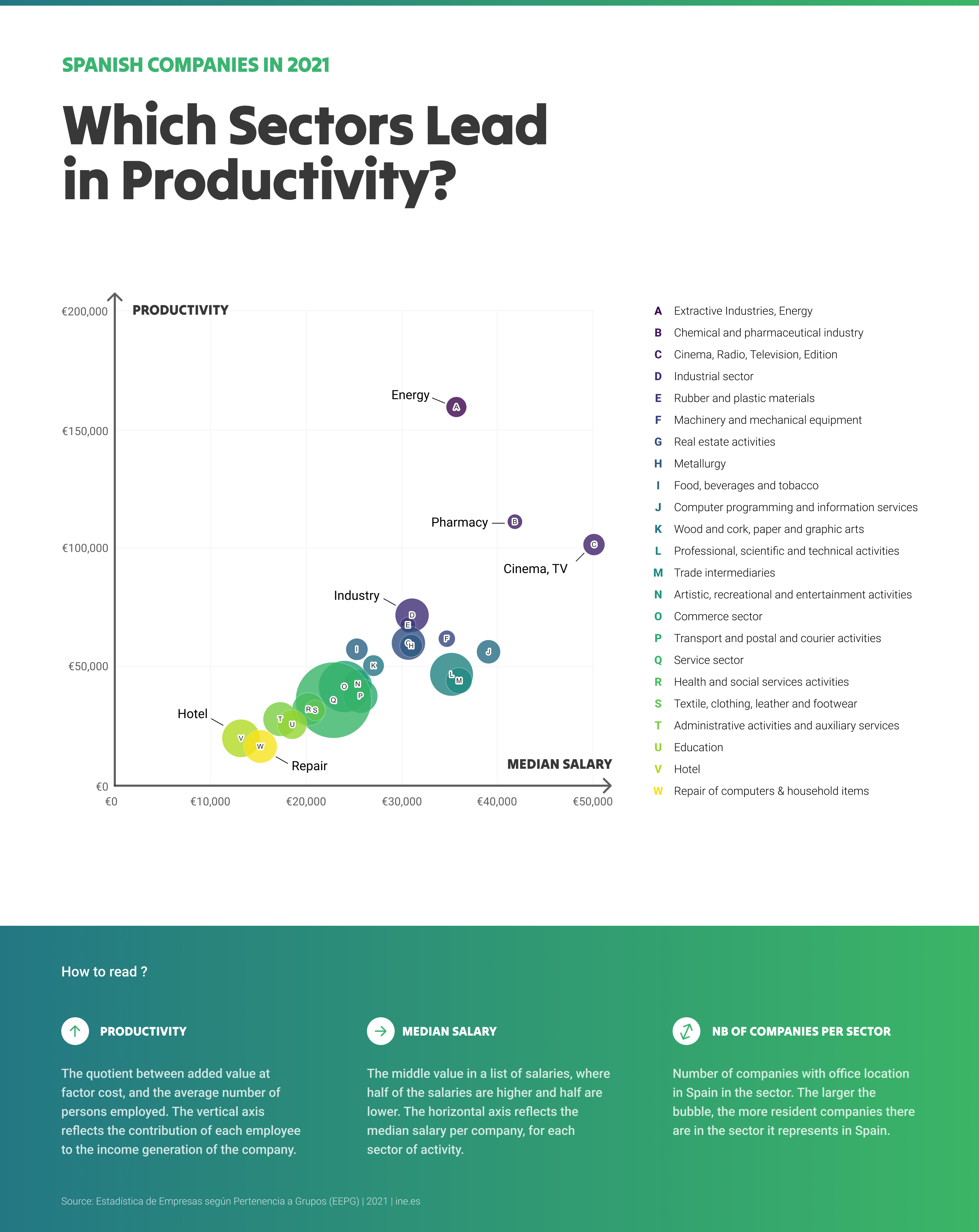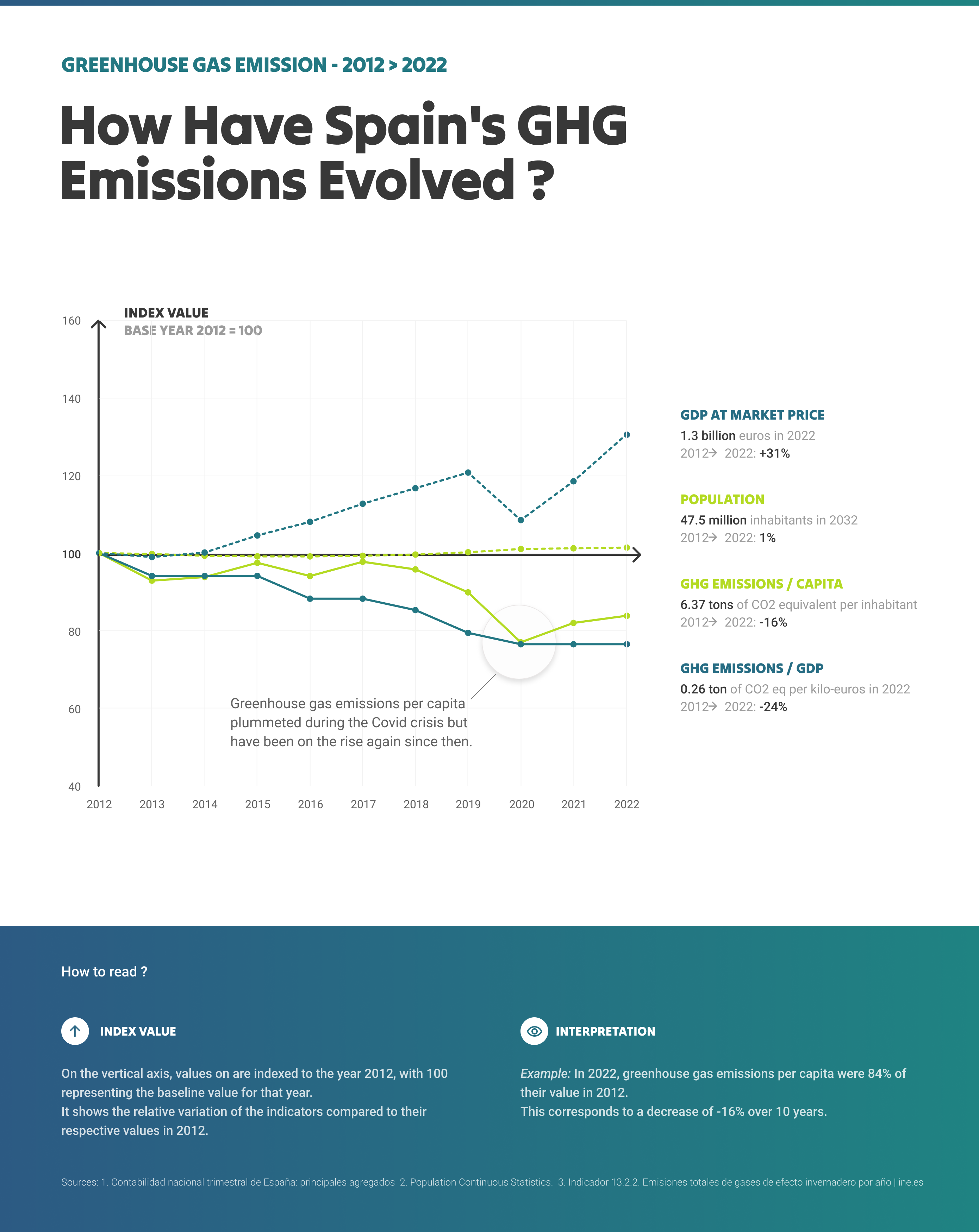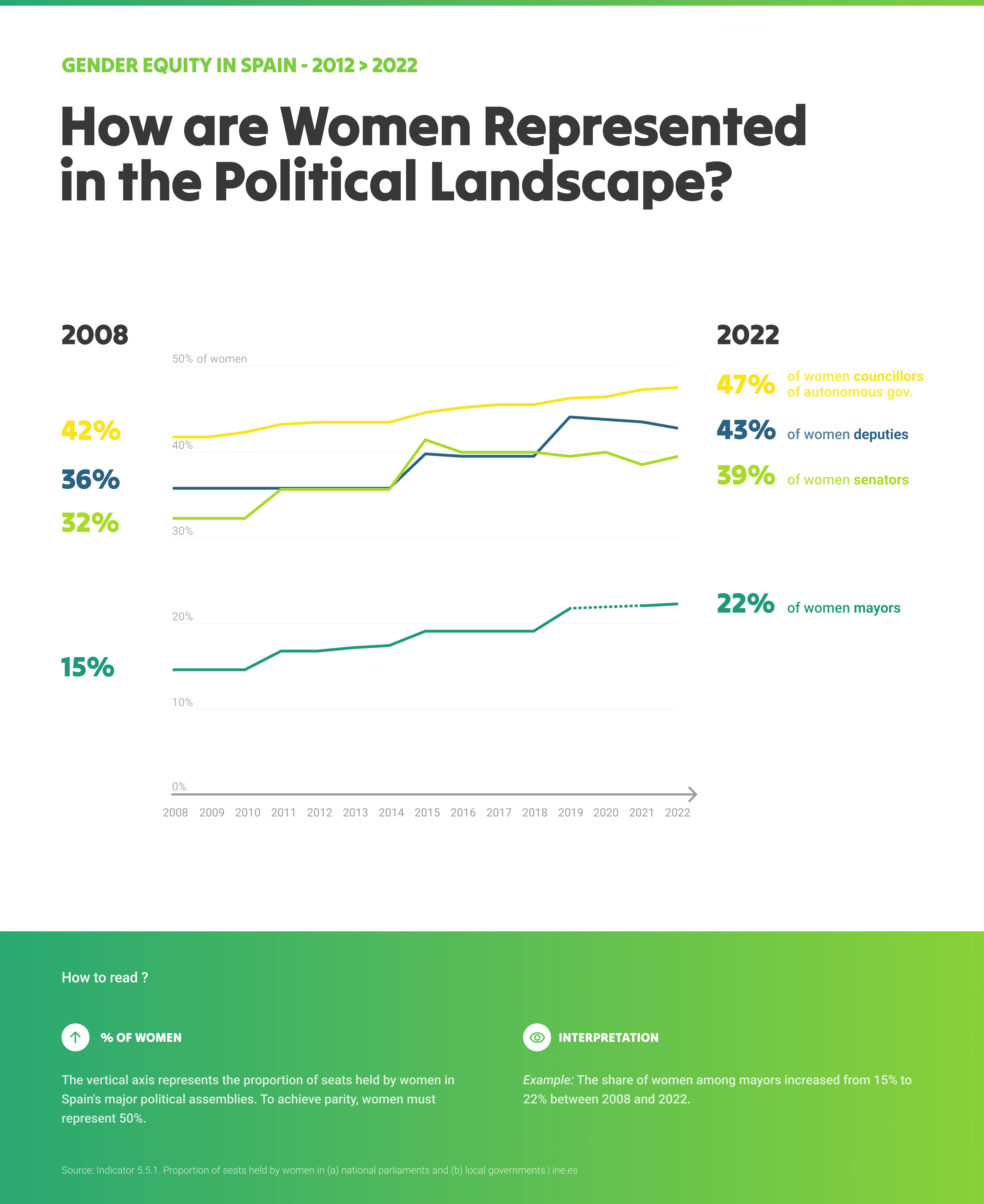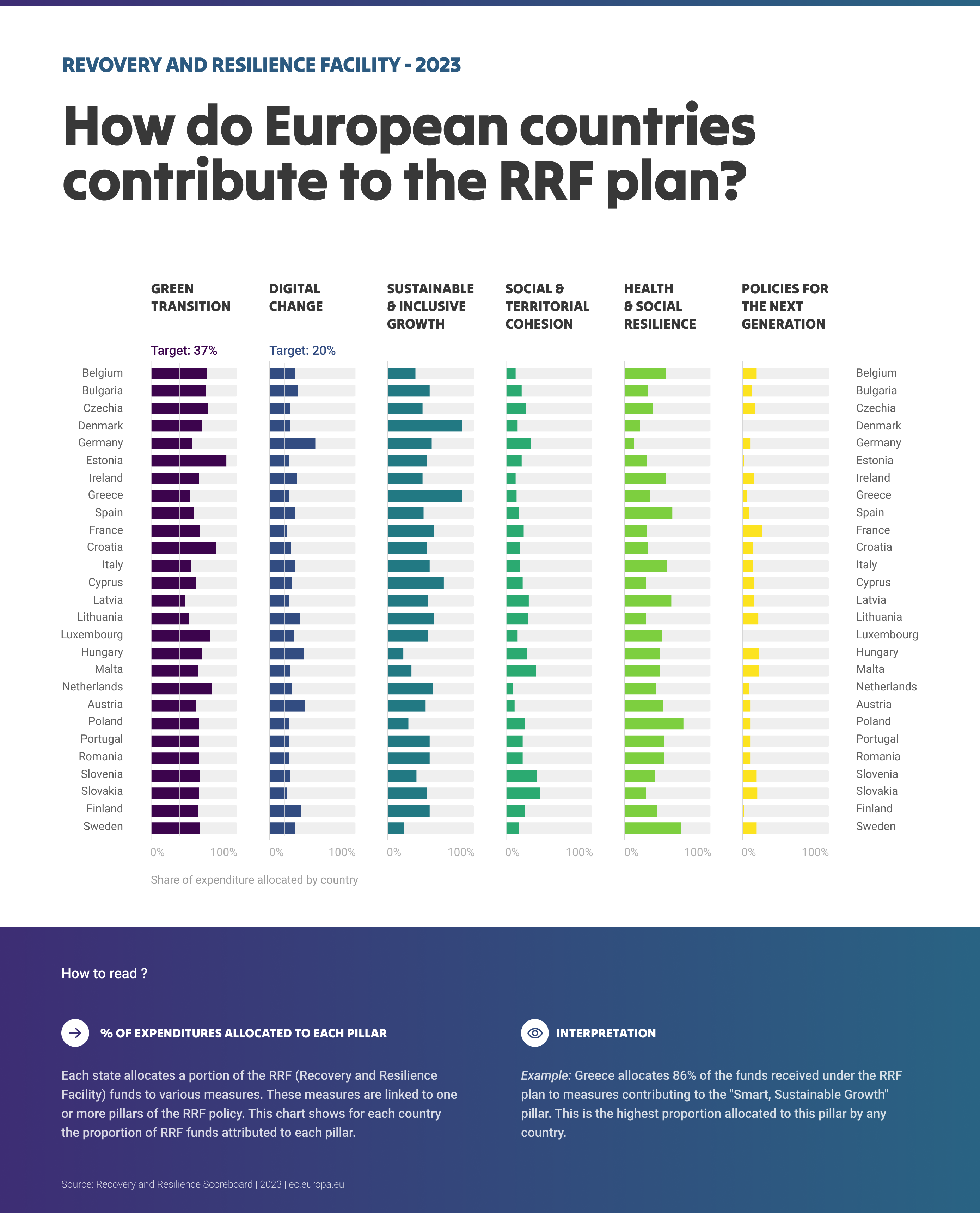Getting to know Spain through open data
Open data brings the EU closer at a national level
Three leading institutions are involved in EU decision-making. The European Parliament represents EU citizens, the Council of the European Union represents EU governments, and the European Commission represents the EU’s overall interests. The Council of the European Union comprises government ministers from each EU Member State, who make decisions on EU laws jointly with the European Parliament, based on legislative proposals put forward by the European Commission. The Presidency of the Council rotates every 6 months among the governments of the EU. Spain held the Council Presidency from 1 July to 31 December 2023. During this period, representatives from Spain facilitated policy discussions and mediated initiatives to achieve the best results for the EU and its citizens.
Understanding the state of play in EU Member States across several policy topics requires data. Open data is an especially valuable resource for gaining insights into diverse government-related topics, including monitoring progress towards achieving political and economic priorities. Datasets from national portals can enrich our understanding of how EU-wide ambitions are being realised nationally.With the example from Spain, this data story explores how national datasets can shed light on diverse political and economic topics. The analysis is focused on the four priorities of the Spanish Presidency, reindustrialising the EU to ensure its strategic autonomy; advancing the green transition; promoting greater social and economic justice; and strengthening European unit
Reindustrialising the EU and ensuring its open strategic autonomy
The commitment to reindustrialising and ensuring open strategic autonomy means fostering the development of strategic industries and technologies in the EU, especially in critical areas such as energy, health, digital technologies and food. Reindustrialisation is about diversifying trade relations, strengthening supply chains and attracting new companies and jobs to the EU.
But what does the industrialisation landscape look like in EU Member States today? Open data allows us to zoom in on countries such as Spain and understand the composition of its economic sectors. One indicator of economic performance is productivity, which calculates the added value of the average employee. Spanish companies involved in extractive industries, the chemical and pharmaceutical industry and cinematography, radio, television and telecommunications were the most productive in 2021 (Figure 1).
Policymakers could leverage such data in their decision-making in line with strategic priorities. For example, would it be more impactful to boost the productivity of frontrunners even further, or would the strategic aims be better served by accelerating sectors with mid-level productivity?

Figure 1: Productivity in 2021 of Spanish multinational companies in several sectors (source: data.europa.eu/Instituto Nacional de Estadística)
Making progress on the green transition and environmental adaptation
The Spanish Presidency presents curbing climate change and environmental degradation not only as a legal and moral obligation but also as a huge opportunity. When presenting the priorities, the President of the Government of Spain stressed that the EU could become a world leader in renewable energy production if it anticipates and adapts to the challenges posed by climate change and environmental degradation.
So, how is Europe doing on its climate goals? Open data serves as a resource for monitoring, evaluating and guiding the progress of policy initiatives. Turning to open data from Spain as an example, we can understand the country’s historical levels of greenhouse gas emissions. In Figure 2, we can see that between 2012 and 2022, the number of CO2-equivalent units released into the atmosphere decreased by 6.37 tons per inhabitant, a 16 % drop in emissions per person. The population increased by only 1 % over this period. This means that the increase in population did not increase greenhouse gas emissions. Represented in terms of tons of CO2 equivalent units per euro, greenhouse gas emissions decreased by 24 % while the gross domestic product increased by 31 %. This means that increased economic growth did not lead to greater greenhouse gas emissions. Such data offers insight into Spain’s progress in addressing climate change and shows its commitment to fighting climate change by progressively reducing CO2 emissions.

Figure 2: Total greenhouse gas emissions of resident units per capita and by gross domestic product in Spain (source: data.europa.eu/Instituto Nacional de Estadística)
Promoting greater social and economic justice
Promoting greater social and economic justice means going beyond gross domestic product growth to ensure that the wealth generated benefits all citizens and improves their opportunities and living standards. This priority promotes a fairer, more caring and more competitive economy. To achieve this, the Spanish Presidency advocated for minimum and common standards for corporate taxation in the EU, fight tax evasion by large multinationals and work to extend workers’ rights and support vulnerable groups. The ambition, therefore, is to create a more inclusive and equitable society for all citizens.
Open data can be used to monitor and assess the impact of policies aimed at improving citizens’ living standards and opportunities. Such data can also hold governments and other organisations accountable for their commitments to creating a more equitable society, offering greater opportunities to all citizens. Using Spain as an example, we can examine the representation of women in national and local governments over the years to discern some of the country’s efforts towards gender inclusivity and equitable political participation (Figure 3). In the past decade, representation by women in the national congress has increased from 36 % in 2011 to 43 % in 2021. Representation in the national senate also rose during this period, from 32 % to 39 %. Similar increases over time are observed at the regional and local levels, as you can see in Figure 3 for regional government roles and local government roles occupied by women. Overall, we can see that women are most equitably represented at the regional level, whereas representation in local mayoralties is the lowest.

Figure 3: Percentage of seats held by women in Spain’s national parliaments and local governments (source: data.europa.eu/Instituto Nacional de Estadística)
Strengthening European unity
Ensuring a cohesive and integrated EU was seen as essential by the Spanish Presidency to meet today’s challenges and maximise the EU’s collective potential. This priority advocates for a greater deepening of the internal market, the competition of the banking and the capital markets unions, and the consolidation of common instruments such as the NextGenerationEU funds, among other focus areas.
Common instruments such as NextGenerationEU also demonstrate how the priority of European unity enables Member States to make progress towards joint objectives. For example, Member States are using funding from the Recovery and Resilience Facility (RRF), the core instrument of NextGenerationEU, to implement ambitious reforms and investments to make their economies and societies more sustainable, resilient and prepared for the green and digital transitions (Figure 4). Open data allows us to discover Member States’ progress in accelerating the digital and green transitions. Member States often exceed the target expenditure contributions to climate and digital objectives under the RRF. In terms of digital expenditure, Germany and Austria are forerunners, allocating 53 % and 51 % of their RRF funding to digital objectives, well above the target of at least 20 %. Several countries are using their RRF funding to accelerate their climate objectives. Bulgaria, Denmark, Estonia, Luxembourg, Malta, Austria and Finland contribute more than 50 % of their funding to climate expenditure, exceeding the target of 37 %.

Figure 4: EU expenditure towards climate and digital objectives from the Recovery and Resilience Facility (source: data.europa.eu/Directorate-General for Economic and Financial Affairs)
Conclusion
Spain’s Presidency of the Council of the European Union highlights four central priorities: reindustrialisation, the green transition, social equity and European unity. These priorities have guided political and economic efforts during Spain’s semester of presidency. In support of such efforts, open data can offer insights that help craft informed policies, track progress and propel the EU towards a more resilient and prosperous future. For example, open data about the make-up of economic sectors can inform national reindustrialisation strategies. Open data about carbon emissions shed light on the progress made towards achieving the green transition. Demographic statistics reveal how representation in government has evolved. And open data on joint expenditure towards joint objectives show how unity can bring about more sustainable and resilient economies and societies across national contexts. Overall, open data provides a solid foundation for a data-driven society.
Do you have questions about economic and political topics relating to your country or the EU in general? Translate your curiosity into insights thanks to the open datasets available on data.europa.eu. Also, stay tuned for our next data stories and webinars by subscribing to our newsletter and following data.europa.eu on social media.
